Whether it’s your homepage copy, your Facebook ads, or the CTA in your latest ebook, anytime you communicate with people through words, you have an opportunity to make an impact through your marketing messaging. The stronger, more consistent your messaging is, the more people are compelled to learn more, click around, sign up, download, etc.
Unfortunately, many brands either miss the mark or don’t make the impact they should. Whether their messaging is too inconsistent or too generic, it’s a lost opportunity. We hate to see bad messaging happen to good brands, so today we’re sharing our best tips to craft messaging that really hooks your audience and, ultimately, converts.
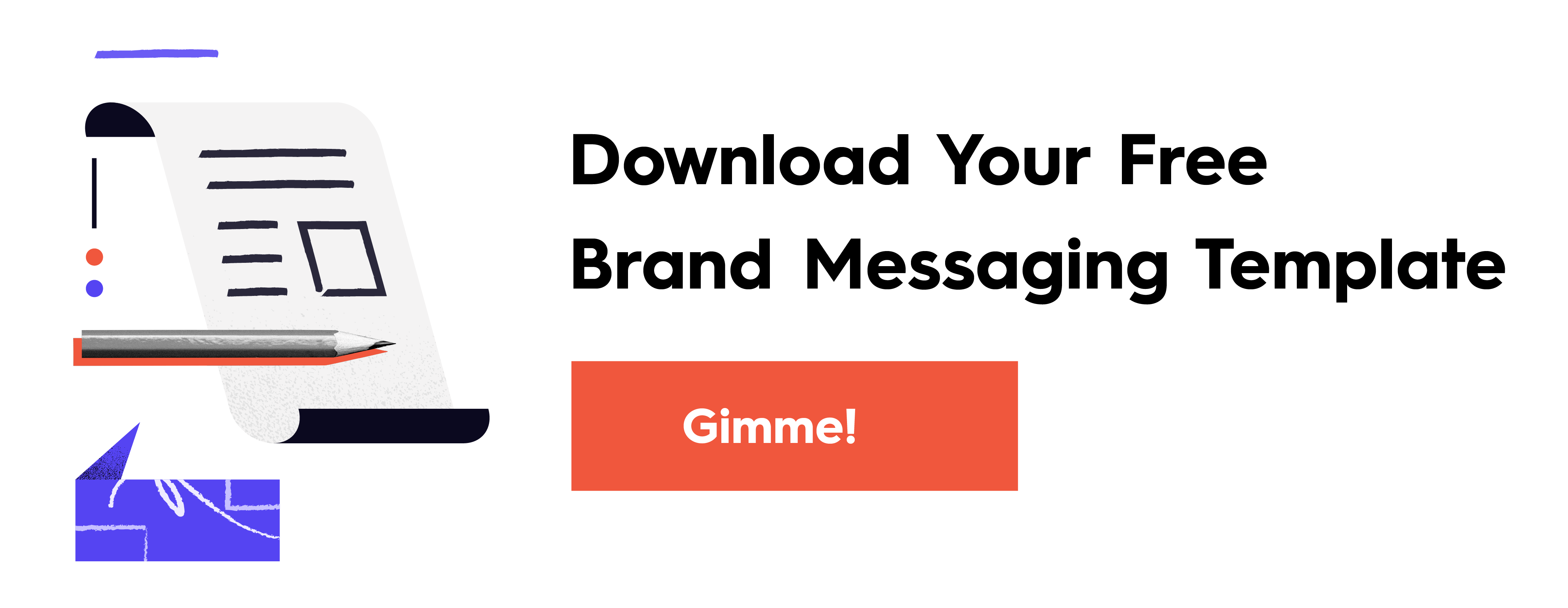
How to Write Better Marketing Messaging
Strong marketing messaging is about communicating who you are and what you offer in a way that resonates with the people you’re trying to reach. Here’s how to make your messaging stick—no matter your industry.
1) Speak to what drives them.
To communicate effectively, you need to understand who you’re talking to and what they care about. What are their needs? Wants? Fears? How does your brand solve their problems or enhance their lives? When you’re crafting your messaging, think about these core emotional drivers and either lead with a fear or pain point (e.g., “eliminate clutter”) or an “ideal state” (e.g., “transform your vacation experience”).
By using language that is inherently emotional (e.g., save, organize, clean, prevent, secure, erase, transform, makeover, etc.), you can effectively grab attention.
Tip: Use our guide to create your marketing personas, which can be a particularly valuable tool to inform your messaging. To find out what you want to know about your audience, you should call, email, survey, and chat with your customers. Ask them about their pain points, challenges, goals, frustrations, aspirations, etc. As you dive into those customer responses, you will see common themes and even phrases that can be useful in crafting your marketing copy. Remember: You want to speak to them in their own language.
Example: Slack does a fantastic job of tailoring brand messaging to different personas, using emotional copy that speaks to a core pain point or desire.


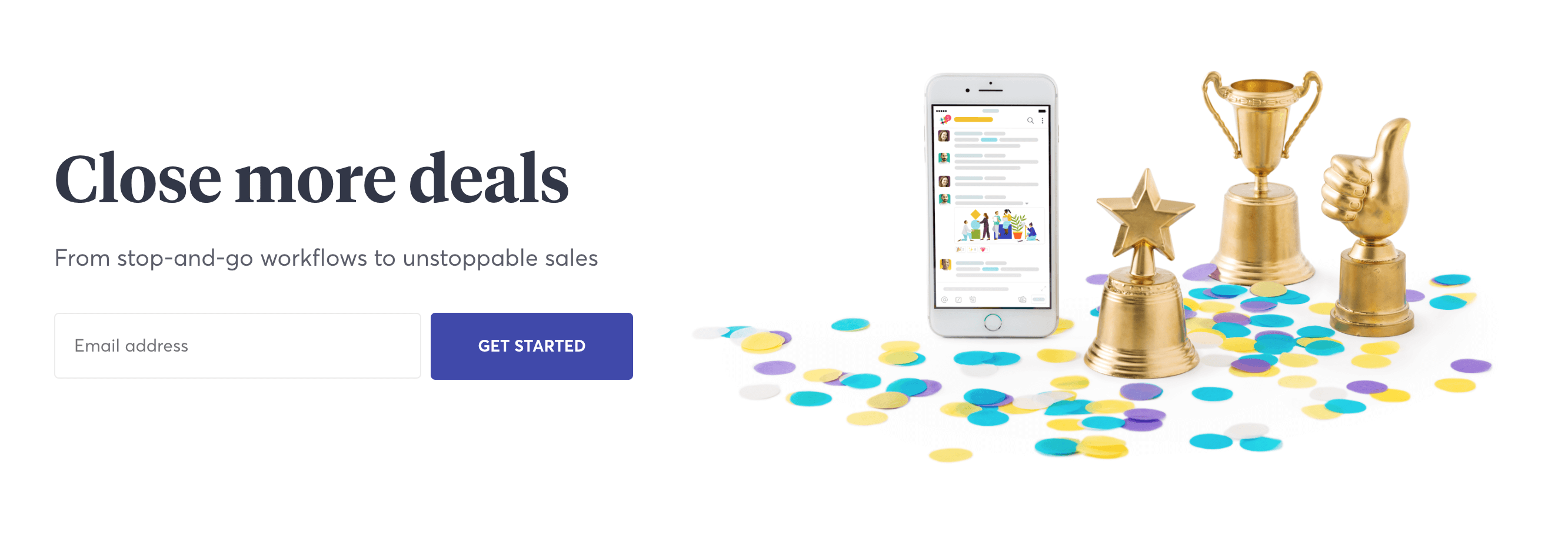
2) Share a scary or surprising statistic.
Data can be a powerful force, especially when it reveals something alarming—a concerning trend, a forewarning, etc. Fear or concern elicits a strong emotional response, and almost always makes someone want to learn more. (The same goes for shock and intrigue.) Dig into data, whether internal or external, to find those attention-grabbing bits for headlines, social posts, advertising, and more.
Tip: If you’re not sure where to find data or how to craft a strong messsage around it, here are 9 great sources of internal data, 100+ sources of public data, and our handy guide to find the most interesting stories in that data.
Example: To change the narrative around Afro hair (and celebrate its natural beauty and inherent power), Ogilvy, Wavemaker, and World Afro Day joined forces to create the brilliantly titled “Change the Facts, Not the Fro” campaign. This series featured surprising statistics visualized with hair—a scroll-stopping campaign that conveyed a powerful message at a glance.
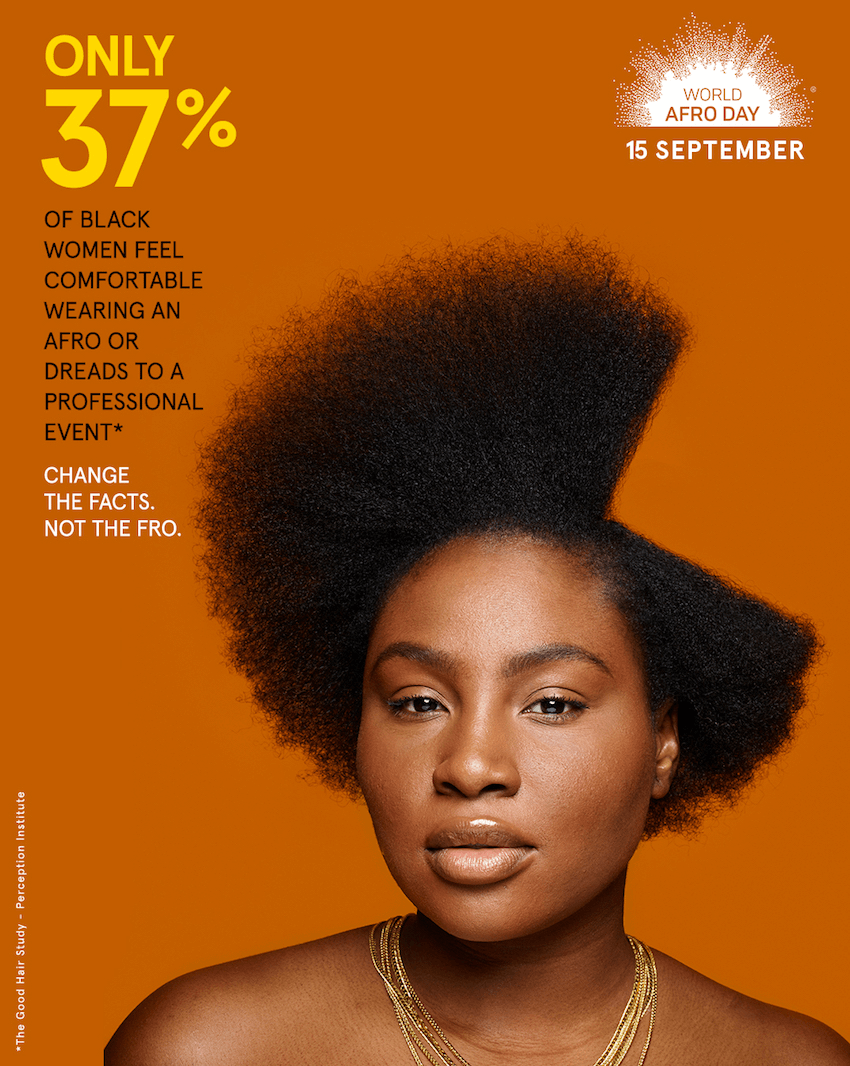
3) Use the second-person voice.
Although it may seem like a small thing, this is probably one of the most common mistakes we see in marketing messaging (and one your competition may be making as we speak). If it’s been a while since you’ve been in English class, writing in second-person voice means speaking directly to the reader (using “you,” not “they”).
Remember: You always want to talk to people, not at or about them.
Second-person voice is more engaging and personal, and thus it helps foster a sense of intimacy. (This is an incredibly important thing to do if you want people to feel a connection to your brand.)
Tip: Always talk to humans like they’re, well, human. This is an area where your brand voice can play a big role and help you create an emotional connection through copy. (Here are 5 ways to find your brand voice if you haven’t identified yours yet. (By the way, also avoid buzzwords or insider jargon that can make people feel intimidated or excluded if they’re not in the know.)
Example: Ellevest is an investing app for women, and their marketing messaging empowers women to take control of their financial lives. With a Millennial audience, they take a more informal (and, frankly, slightly sassy) approach to their content. While they could have titled their article “Why It’s Important for Women to Save for Their Future,” they made it more provocative and personality-packed by saying, “Why You Need a F*ck-You Fund.” This direct language transforms a generally informative article into a must-read.
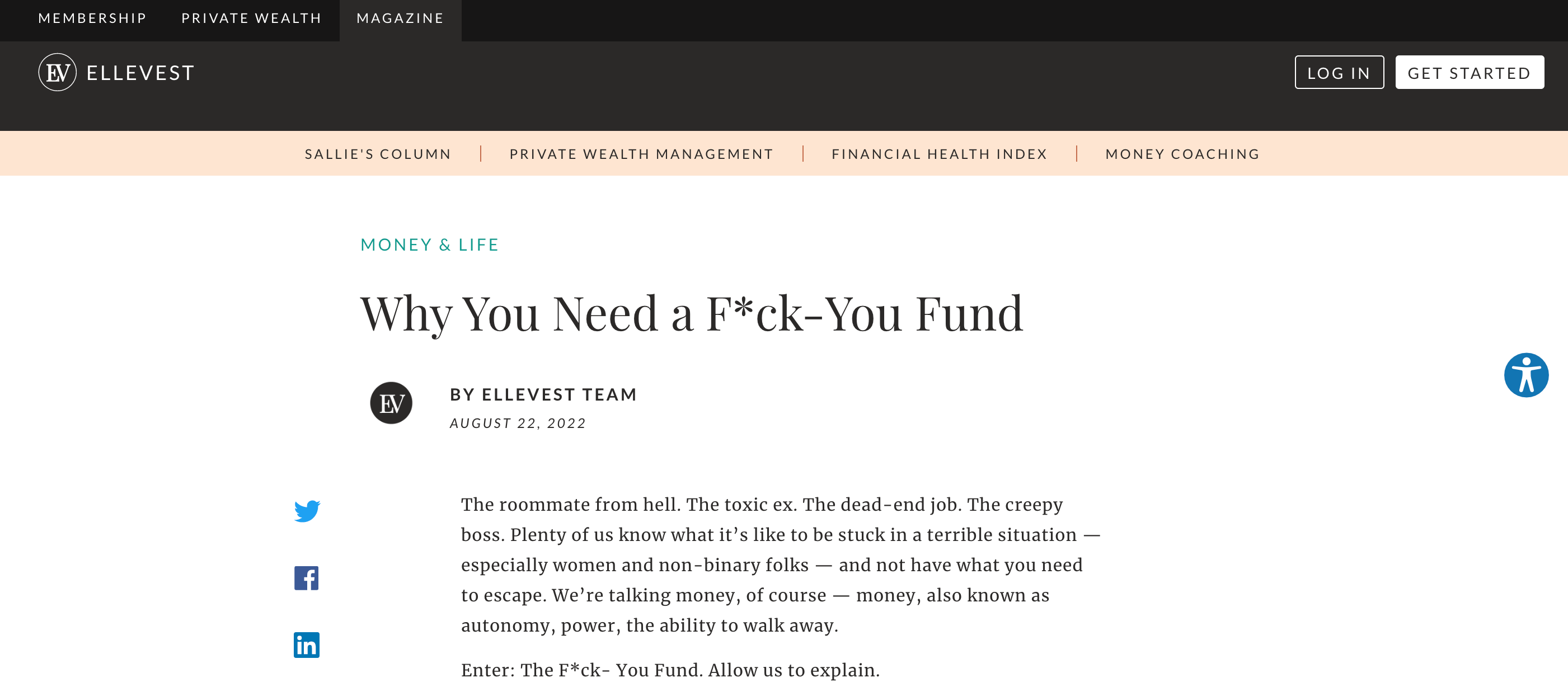
4) Use language that cultivates trust.
To stand out from your competition, you want to quickly grab attention and communicate that you are the brand people should want to work with. Words or language that make people feel like they can trust you are particularly effective.
Trust-building words: secure, safe, reliable, dependable, sturdy, quality, expert, innovative, unique, proven, successful, efficient, transformative, skilled, etc.
Tip: Data is also a clever way to communicate trust—and encourage people to join the crowd. For example, to convince people to sign up for our newsletter, we tell them to “join the 14,500 marketers” who already have.
Example: Gusto is a payroll platform that makes it easy to run payroll on time. Two simple words make their value proposition particularly enticing: “award-winning.” It’s a simple way to grab attention, as one wouldn’t often think of HR software as award-winning, while conveying credibilty and cultivating trust.
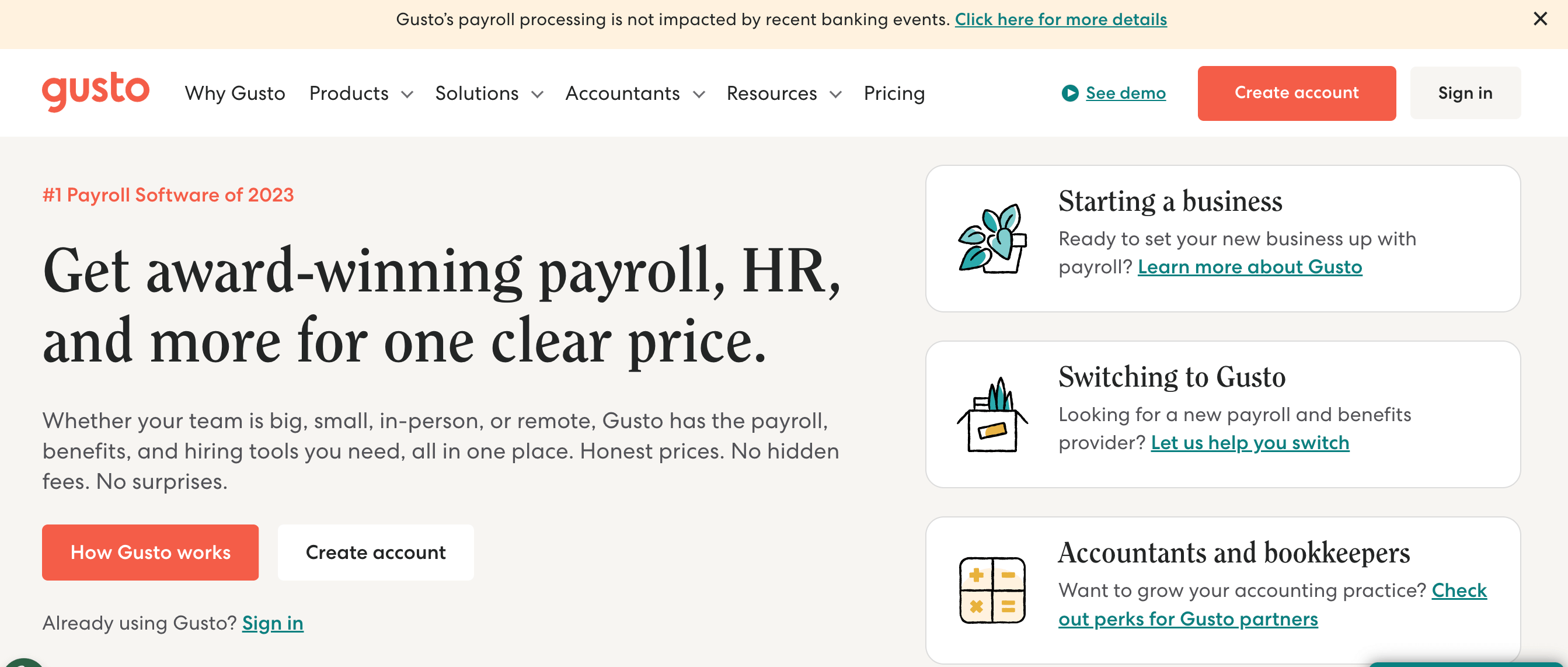
5) Be brief—but impactful.
You’re already fighting for attention, so don’t bury your message in flowery language or waste time with long, meandering paragraphs. Short, snappy, and simple copy grabs attention and nudges people along the buyer’s journey. The key, of course, is to use emotional language or language that paints a picture instantly. (This is the best form of brand storytelling, in our opinion.)
Tip: Always take a second pass to tighten your marketing copy.
- Is it clear and concise?
- Is there an interesting hook?
- Can you simplify or use a more powerful word?
Example: This Target pharmacy billboard is a few years old, but it is an absolutely perfect case study in impactful storytelling—with as few words as possible. The clarity of messaging, combined with a creative presentation, almost instantly implants the marketing message in the viewer’s brain in a flash. (This is also yet another plug for leading with data.)

How to Fine-Tune Your Marketing Messaging
When you put work into your brand messaging, you want to know that it’s working for you. That’s why A/B testing is your friend. With hard data, there’s no more relying on a hunch, intuition, or personal preference when it comes to your copy.
We prefer testing methods that are simple yet insightful. In our experience, one of the best tools for A/B testing copy is Facebook ads. They’re especially great because they’re easy to implement, far less costly, and tailored to the people you’re actually trying to reach. No matter what type of messaging you’re testing, whether it’s a new tagline, value prop, or CTA, Facebook ads can help you easily see what’s working and what’s not.
If you’re experimenting with various types of marketing messaging, try this simple test:
- Build separate landing pages to test different copy for each. Use identical design, changing only the copy.
- Run a targeted FB ad to your customers for a week. Note: Remember that a highly targeted ad usually means less traffic. Keep in mind that you want to narrow your criteria, yet still generate enough numbers to get statistical significance on test results.
- See which landing page got more conversions.
Yep, it’s that easy. Of course, you can run more in-depth A/B tests, depending on your needs. There are plenty of useful tools and resources to do so.
- Validate your sample size with Optimizely’s calculator.
- Try Neil Patel’s A/B testing calculator to help you calculate conversions.
- Learn everything you need to know about A/B testing with Optimizely’s optimization glossary.
- Check out The Beginner’s Guide to Conversion Rate Optimization by CXL.
Based on your A/B tests, you should have better insight into what resonates and what needs to be tweaked.
However, research and revision are a huge part of finding the right messaging, so don’t consider it a one-and-done deal. There are always opportunities to improve. If your budget permits, we recommend testing your copy every six months (or anytime you change your marketing direction or brand strategy).
Look For More Ways to Tell Your Brand Story
If your brand creates a lot of content and/or has a lot of content creators, maintaining consistency is crucial. Ensure everyone on your team is familiar with your messaging framework (and knows where to find it). You can also check out a few more of our resources to tell your brand story effectively.
- Learn how to write compelling CTAs that convert.
- Check out our roundup of 100+ tools and resources to write better copy.
- Get inspired by how these brands turn their brand story into unique content.
- Learn how to put your brand’s values front and center in messaging.
- Try these tips to tell your brand story at every touchpoint.
Of course, if you’re struggling with crafting your brand messaging—or any part of your brand identity—hit us up. We’d love to help bring your story to life.






